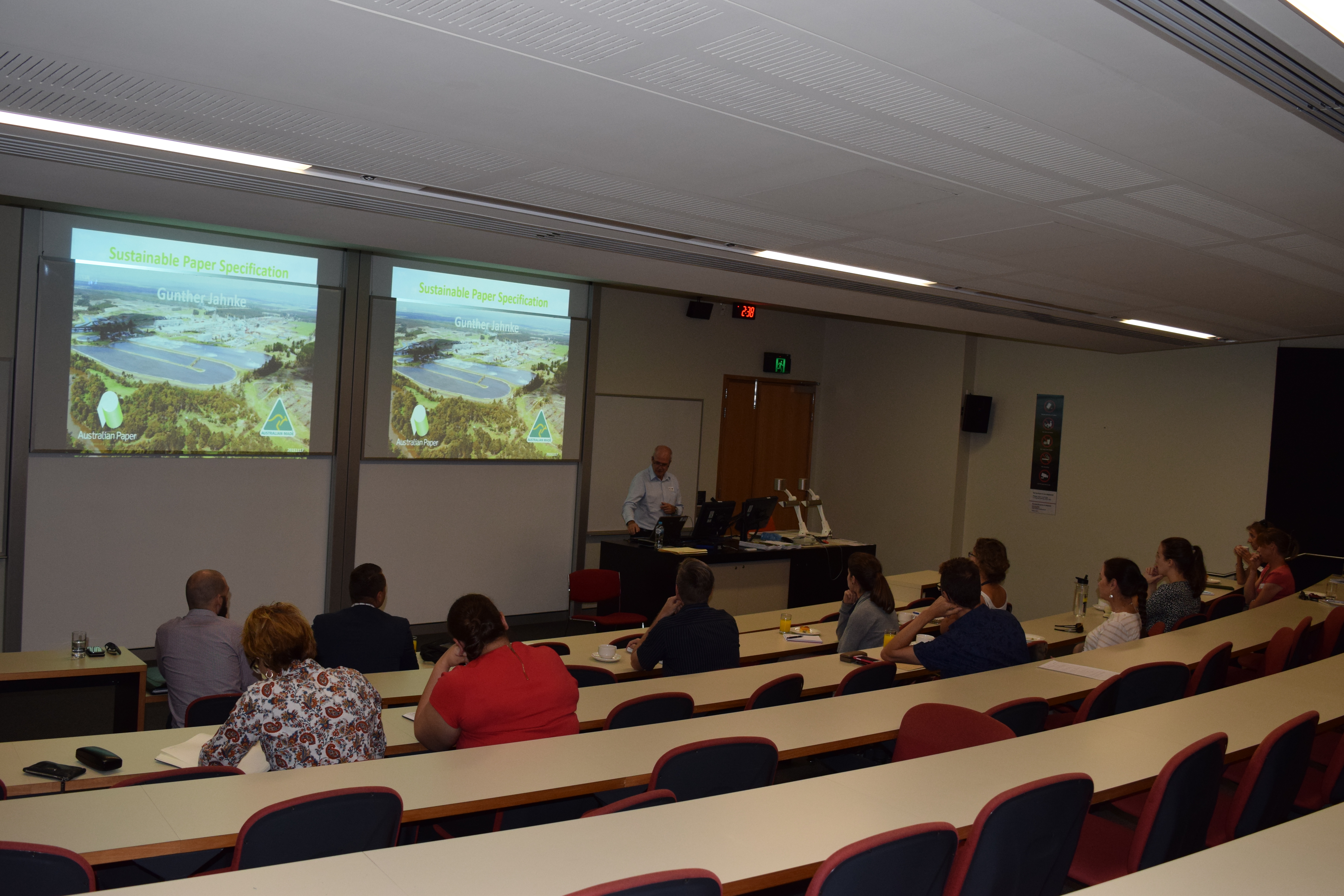 What does it really mean when your paper’s been recycled? Green Paper and the Planet, the Green Office program’s first 2016 update session, yielded fascinating insights into sustainable paper production at Australian Paper, the country’s only integrated office, printing and packaging paper mill. The company produces 600,000 tonnes of paper each year and is Victoria’s biggest industrial generator of renewable energy.
What does it really mean when your paper’s been recycled? Green Paper and the Planet, the Green Office program’s first 2016 update session, yielded fascinating insights into sustainable paper production at Australian Paper, the country’s only integrated office, printing and packaging paper mill. The company produces 600,000 tonnes of paper each year and is Victoria’s biggest industrial generator of renewable energy.
Session presenter Gunther Jahnke, Australian Paper’s Manager of Engagement and Sustainability, defined industry certification systems such as the Forest Steward Council (FSC) and Programme for the Endorsement of Forest Certification (PEFC), described the Australian Paper production process and discussed the effects of paper purchasing choices.
In Australia, Mr Jahnke revealed, forests are not harvested to make paper—instead, they’re harvested for high-quality sawlog used in housing construction and furniture manufacturing. Wood that doesn’t meet that standard is turned into paper instead of being wasted—and at Australian Paper, 97% of that wood comes from certified forest management operations.
Although FSC and PEFC achieve the same outcome—sustainably managed forests—they do so in different ways. FSC sets its own global standards, whereas PEFC assesses and endorses in-country forestry schemes (Australia’s PEFC-endorsed national standard is the Australian Forestry Standard, or AFS).
So what about recycled and carbon-neutral paper choices? Not all recycled paper, Mr Jahnke pointed out, represents a sustainable choice: imported recycled paper is just solving another country’s landfill problem. Locally made recycled paper such as that produced by Australian Paper, however, offers clear environmental and social benefits, including zero sea freight emissions, reduced landfill and local employment opportunities.
Carbon-neutral paper—the production of which counteracts the carbon released during forestation, manufacturing and distribution—can only be awarded that classification if its manufacturer has accounted for, calculated, recycled and offset greenhouse gas emissions for the paper’s entire lifecycle. The Australian Government’s NCOS carbon-neutral certification requires manufacturers to perform a Life Cycle Assessment (LCA) of manufacturing, distribution and disposal every two years.
How does this translate at UQ? As well as using recycled paper in photocopiers and printers in 13 of its library branches, the University has also developed comprehensive Sustainable Procurement Guidelines and handy paper recycling tips for staff and students. You can also find more information about the Green Office program on their website.



